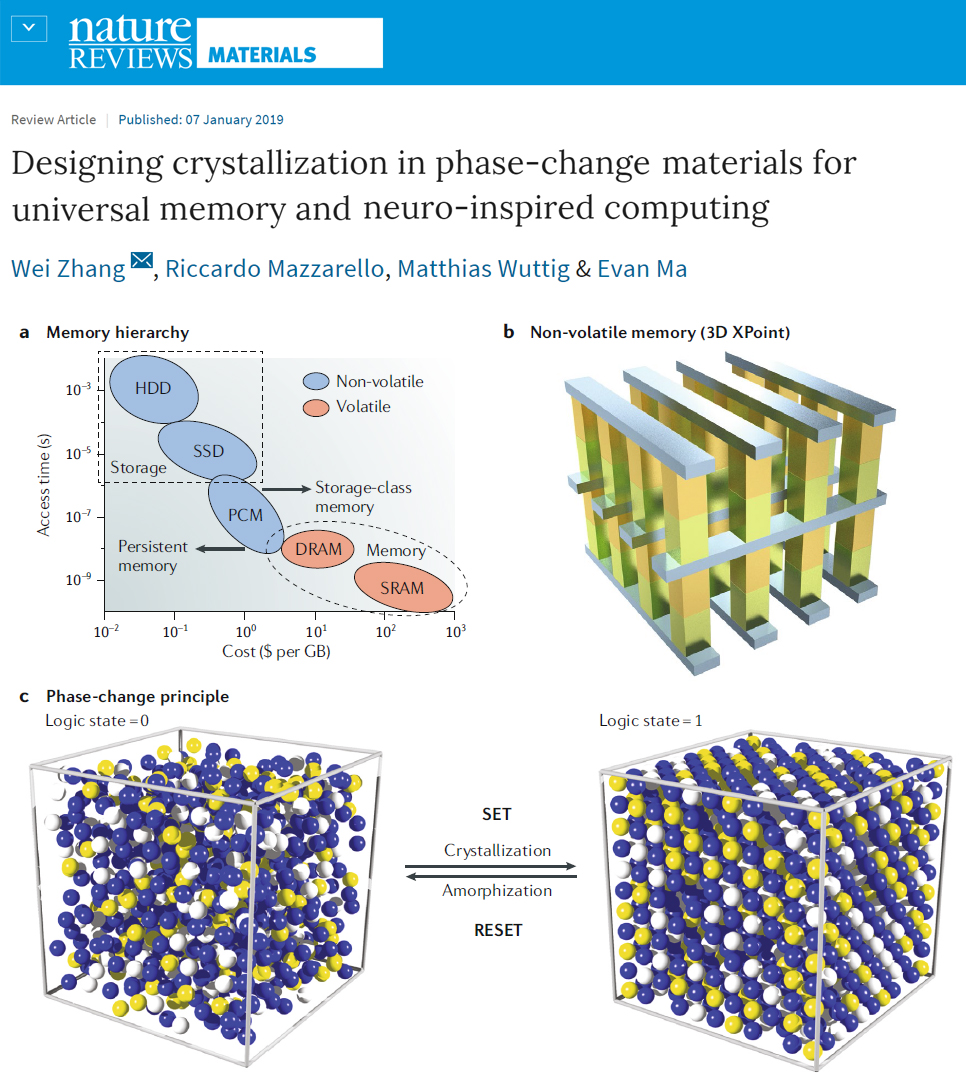Mobile electronic devices, Artificial Intelligence, Big Data, Cloud Computing and many other technological developments are changing our lives and society rapidly. However, they are also posing a huge challenge to the current memory and processing technologies – the drastically increased burden on data storage and processing. Massive efforts have been devoted to the development of new electronic and memory materials for next-generation non-volatile memories and neuromorphic computing devices. The former combines the advantage of fast operation speed with non-volatile features (data are preserved in the absence of power supply), making data storage and memory obsolete. The latter marks a fundamental shift from the current von Neumann computing architecture, and is expected to lead to a dramatic increase in the computing efficiency, together with a further reduction in the size of the devices. Chalcogenide phase-change materials are one of the leading candidates for these emerging electronic devices.

On Jan 7th 2019, Nature Reviews Materials (IF=51) published a Review article by researchers from Xi’an Jiaotong University: designing crystallization in phase-change materials for universal memory and neuro-inspired computing, DOI: 10.1038/s41578-018-0076-x . In this work, the mechanisms of the crystallization dynamics of PCMs are thoroughly reviewed by discussing structural and kinetic experiments, as well as ab initio atomistic modelling and materials design. Based on the knowledge at the atomistic level, potential routes to improve the parameters of phase-change devices for universal memory are depicted. Moreover, the role of crystallization in enabling neuro- inspired computing using PCMs is extensively discussed. Finally, an outlook for future opportunities of PCMs are discussed, which include all-photonic memories and processors, flexible displays with nanopixel resolution and nanoscale switches and controllers.
Prof. Wei Zhang from CAMP-Nano and State Key Laboratory for Mechanical Behavior of Materials of Xi’an Jiaotong University is the first and the corresponding author of the paper. Other contributors include Prof. Evan Ma from Johns Hopkins University, Prof. Riccardo Mazzarello and Prof. Matthias Wuttig from RWTH Aachen University. This work is supported by the National Natural Science Foundation of China (61774123 and 51621063), 111 Project 2.0 (BP2018008), the Youth Thousand Talents Program of mChina, the Young Talent Support Plan, Xi’an Jiaotong University and the International Joint Laboratory for Micro/Nano Manufacturing and Measurement Technologies.
Link: https://www.nature.com/articles/s41578-018-0076-x
CAMP-Nano: http://nano.xjtu.edu.cn
Prof. Wei Zhang http://gr.xjtu.edu.cn/web/wzhang0


